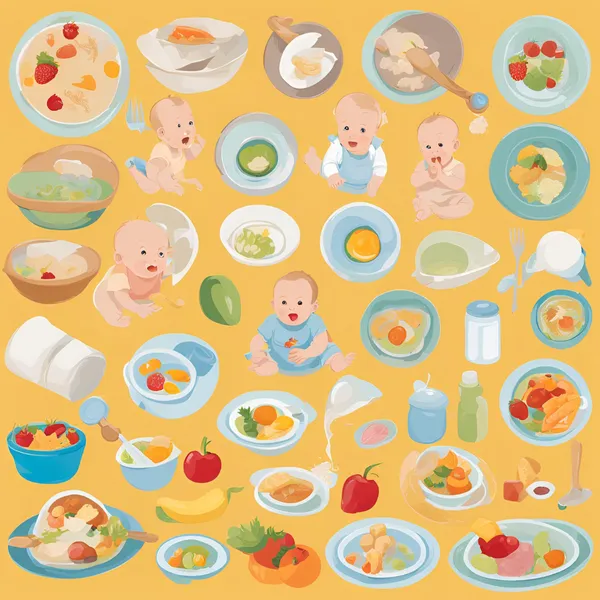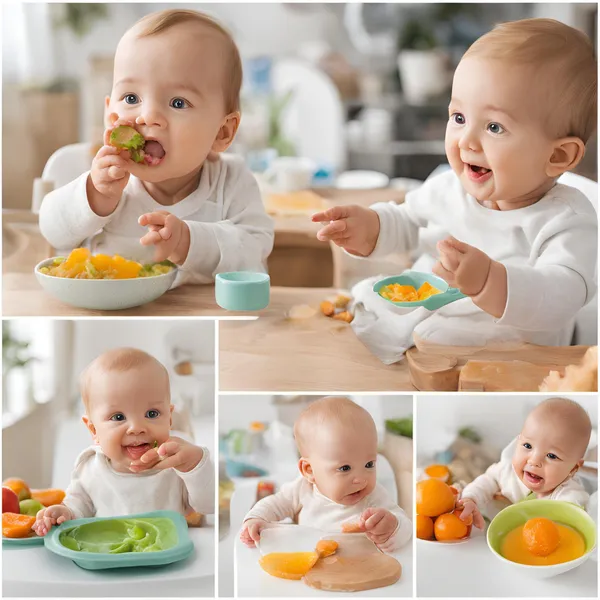Transitioning your baby to starting the progress of introducing table foods is a significant step in growth and development, as well as feeding. However, it is never clear when precisely the right time for every new parent to know about it.
Many parents wonder, “When can babies eat solid foods?” Therefore, it may take some effort to answer that question to the point, and this article’s purpose is to bring a simple guide in a single place: signs of readiness, age range, types of feeding, nutrients, and general tips on how to transition.
When Can You Start Introducing Solid Foods? Recognising the Signs of Readiness

Of course, there is a schedule for the first foods you can feed your baby, but it is essential to remember that every baby is unique and develops independently.
If you are wondering when your baby should start on solid foods, it is more helpful to be concerned with certain developmental milestones rather than a specific date. Knowing when babies can eat solid foods depends on observing these key developmental milestones:
Ability to Sit Up with Support
A sufficient sitting balance with some trunk control and good head and neck control is usually mandatory. Such an attitude ensures that the baby does not choke and that the baby is also able to handle the food it has in its mouth well.
Loss of the Tongue-Thrust Reflex
Babies have the involuntary mechanism to reject foods by thrusting them out of the mouth using the tongue. This reflex gradually fades away at about 4-6 months of age. If this reflex is still strong, you and your baby can become frustrated when introducing solids.
Interest in Food
Did your baby watch you eat as though they were fascinated by what was happening? Does your child grab your food or open their mouth when they see youse you are eating? These signals that they are transitioning and interested in different flavours and food textural properties.
Ability to Swallow Food
Babies require proper growth to use their hands and tongue to put the food at the back of the mouth and swallow it. If they are constantly shoving food back into their mouth or gag often (excluding regular gagging while being a toddler and figuring out the textures), then the mother will most likely ease their Appetite.
Sometimes, if your baby constantly appears hungry well after breast milk or formula feedings, there could be something more than liquids required.
When Can Babies Eat Solid Foods?

The Recommended Age Range: 6 Months and Beyond
According to the American Academy of Pediatrics (AAP) and the World Health Organisation (WHO), children should be exclusively breastfed for the first six months. From the seventh month of age, food other than breast milk or formula should be given together with breast milk or formula.
This is one reason that helps define when babies should be fed on solids callable foods. The babies are ready at six months because they have gained the motor skills and proper digestive system to accommodate the new food.
Solids before four months of age should be highly discouraged because they can cause allergies, choking as well as stomach upsets. Ideally, between four and six months should only be started with the pediatrician’s consultation if necessary.
Approaches to Introducing Solids: Purees vs. Baby-Led Weaning
There are two main approaches to introducing solids:
Traditional Purees
This is the initial use of a thin single-texture substrate, progressing to a thicker substrate and use of multiple substrates. This method allows the custodians of the baby to determine the consistency and amount of food the baby takes.
Baby-Led Weaning (BLW)
This approach eliminates the next puree stage and lets babies feed themselves easy-to-chew finger foods from the beginning. S solids from BLW allow babies to learn the pros and cons of food textures, and these help them practice self-regulation and motor skills.
Each of them has its advantages and disadvantages. Purees allow more portion control, which is helpful for babies with developmental disabilities.
It is more messy than BLW as children are more independent and explore the environment, but the parent or caregiver has to ensure that the foods are safe to chew and swallow to prevent choking.
Finally, it is essential to note that the best method suits you and your baby. It’s also possible to blend the said approaches so that one or more actions reflect on both M&A and E&P.
The Importance of Iron and Other Nutrients

Iron is an essential nutrient in the growth of infants and is especially important for brain and red blood cell formation.
Breast milk contains adequate iron for the initial six months of the baby’s life, but babies depend on iron from other foods from the seventh month. Iron-rich foods to introduce include:
- Iron-fortified infant cereals
- Pureed meats (beef, poultry)
- Beans and lentils
- Spinach and other green-leaf vegetables
Other essential nutrients to consider when starting solids include:
- Zinc: EExistsin meats, poultry, and beans.
- Vitamin C is in play with iron absorption and is available in fruits and vegetables.
- Healthy Fats: A fatty acid crucial for brain health and can be consumed in foods such as avocados, olive oil, and nut butter, introduced gradually due to possible allergies.
General Guidelines for Starting the Transition
More care should be taken when babies can eat solid foods. Some of the practical tips that should be taken include
Start Slowly
Start by gradually replacing one single ingredient meal at a time and replace it with a new meal for a few days. This assists in the determination of allergies or intolerances within the body.
Offer Food at a Good Time
Therefore, select the time of the day when your baby is awake and in good spirits but not groaning. Itsunger or close to dozing off.
Keep it Positive and Fun.
The interactions during these times should be pleasant for you and your baby. Do not force them to eat what they feel is right or what you think is right for them.
Focus on Exploration
During the initial period,d the primary purpose is to assist the baby in becoming aware of different tastes and textures. That shouldn’t be a concern about how much hungry they are indulging in.
Be Mindful of Allergens
Feed your baby individual allergens (peanuts, tree nuts, milk, eggs, soy, wheat, fish, shellfish) and observe for reactions.
Talk to your child’s pediatrician about when to introduce these foods. If the child has relatives with food allergies, it may be risky for the child to consume foods containing those allergy-causing elements when they are too young.
Avoid Honey
Avoid preparing honey for use in foods for children below one year because they are at high risk of developing botulism.
Avoid Added Sugars and Salts
Infants, similarly to kids and adults,s do not require supplementary sugars or salts to meet their food requirements.
The Importance of Consulting with a Pediatrician
If you are interested in starting solid foods, this article contains general information that will be helpful to you. However, all babies are different, and discussing with your paediatrician when it is ready for solids is essential.
It only takes twenty minutes for your baby to be checked out by your pediatrician and to suggest what food to introduce and how it is to be done since he or she will be having questions regarding his or her baby’s development. They can also advise on a feeding plan for your baby when you consult them since every child has their own needs.
Feeding your baby has become a fun time, especially when the baby is graduating to solid foods. It is, therefore, essential to consider specific signs of readiness, guidelines, and your paediatrician’s advice to make this transition to the new level of nutrition enjoyable and as effective as possible.


